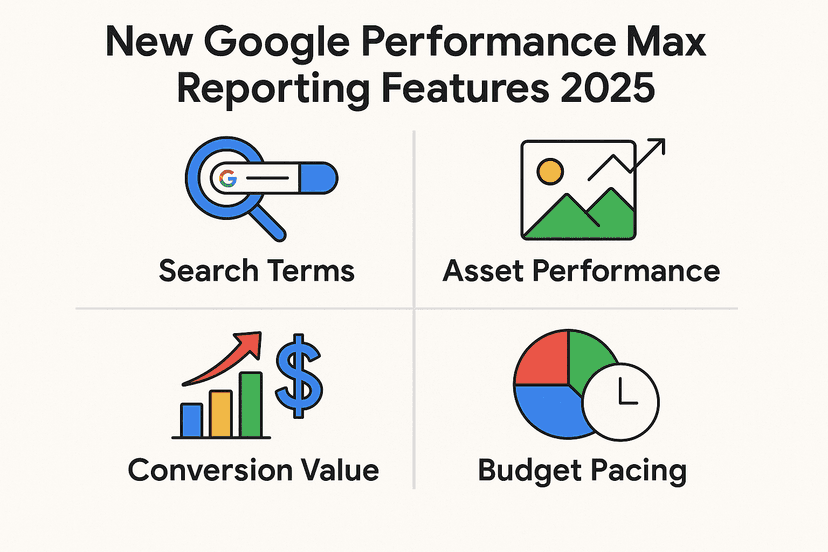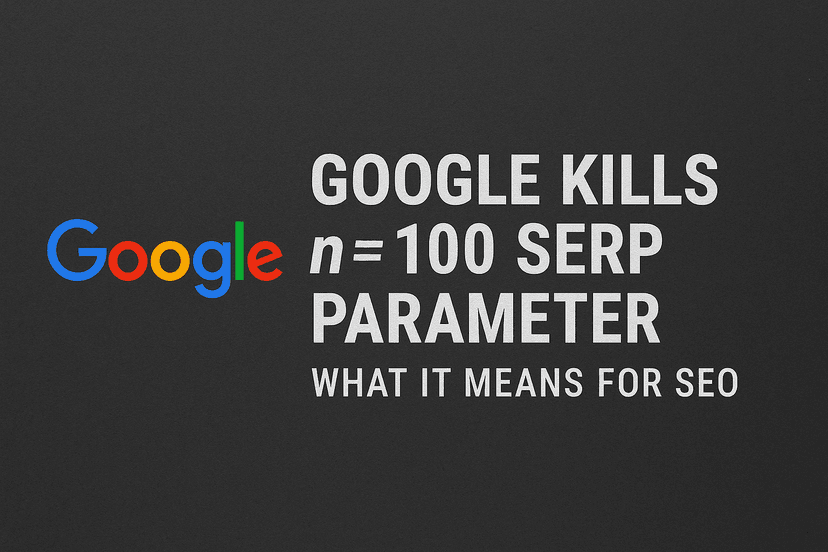In today’s digital landscape, establishing a strong online presence is more crucial than ever for brands looking to thrive. As the digital marketplace continues to expand, businesses must adopt innovative strategies to stand out in search results and reach their target audience effectively. One powerful approach that’s gaining traction is programmatic SEO.
This comprehensive guide will explore what programmatic SEO is, why it matters, who can benefit from it, and how you can implement it to boost your online visibility. Whether you’re a seasoned digital marketer or a business owner looking to improve your online presence, this article will provide valuable insights into leveraging programmatic SEO for success.
What is SEO and Why Does it Matter?
Before diving into programmatic SEO, let’s establish a solid understanding of what SEO is and why it’s important for businesses.
Search Engine Optimization (SEO) is the practice of optimizing web pages to rank higher in search engine results for relevant search terms. The goal is simple: when someone searches for information, products, or services related to your business, your website should appear prominently in the organic (non-paid) search results.
For example, if your business offers digital marketing services, you’d want your pages to rank well for terms like “digital marketing agency,” “SEO services,” or “online marketing strategies.”
The importance of ranking well cannot be overstated. Research shows that the first five organic results in search engines receive the majority of all clicks. Users rarely venture beyond the first page of search results, making it essential to secure a position at the top if you want to drive significant traffic to your website.
SEO is not just about driving traffic; it’s about driving the right traffic. When your website ranks for relevant terms, you’re attracting users who are actively searching for information, products, or services related to what you offer. This targeted approach leads to higher-quality traffic with better conversion potential.
What is Programmatic SEO?
Programmatic SEO is an advanced approach to search engine optimization that leverages automation and data to create large volumes of targeted, high-quality landing pages at scale. Rather than manually creating individual pages, programmatic SEO allows you to generate hundreds or thousands of optimized pages based on keywords, user intent, and data patterns.
This approach involves using specialized code, templates, and data sources to automatically generate and optimize content. Each page is designed to target specific keywords or variations of keyword groups, ensuring potential customers find pages tailored to their exact search queries.
The key components of programmatic SEO include:
- Templates: Creating flexible content frameworks that can be populated with variable data
- Data Sources: Accessing reliable information to populate your templates
- Automation: Using code to generate pages at scale
- Quality Control: Ensuring that automated content maintains high standards
- Monitoring and Updates: Tracking performance and making adjustments as needed
The beauty of programmatic SEO is that it allows you to create landing pages for every category, product, service, location, or variation that your business offers without the immense manual effort traditionally required.
Why is Programmatic SEO So Important?
In today’s competitive digital landscape, programmatic SEO offers several compelling advantages that make it an essential strategy for businesses seeking to maximize their online visibility.
Scalability and Efficiency
One of the most significant benefits of programmatic SEO is its ability to create hundreds or thousands of optimized pages with minimal manual effort. This scalability allows businesses to cover a vast array of keywords and search intents that would be impractical to target manually.
For instance, an e-commerce store selling shoes might need pages for every combination of shoe type, brand, size, color, and location. Manually creating these pages would require an enormous amount of time and resources, but programmatic SEO can generate these pages efficiently.
Targeting Long-Tail Keywords
Long-tail keywords are longer, more specific search phrases that typically have lower search volume but higher conversion potential. Programmatic SEO excels at targeting these valuable long-tail keywords at scale.
By creating dedicated pages for specific queries, businesses can capture traffic from users who know exactly what they’re looking for. These users often have higher purchase intent and are closer to making a buying decision.
Improved User Experience
When done correctly, programmatic SEO creates pages that precisely match user search intent. When someone searches for a specific query and lands on a page that directly addresses their needs, they’re more likely to engage with the content and convert.
This alignment between search intent and content leads to better user metrics like lower bounce rates, longer time on site, and higher conversion rates – all factors that can positively influence search rankings.
Competitive Advantage
Many businesses struggle to create and maintain large-scale content strategies. By implementing programmatic SEO, you can outpace competitors by covering more keyword territory and creating more entry points to your website.
This comprehensive approach to content creation allows you to establish topical authority in your niche and capture traffic that competitors might miss.
Cost-Effective Strategy
While traditional content creation can be expensive and time-consuming, programmatic SEO offers a more cost-effective approach. Once the initial system is set up, the marginal cost of creating additional pages is minimal, allowing businesses to achieve a higher return on investment.
Who Can Benefit from Programmatic SEO?
Programmatic SEO can benefit virtually any business with an online presence, but it’s particularly valuable for certain types of companies and websites.
E-commerce Businesses
Online retailers with large product catalogs are ideal candidates for programmatic SEO. By creating optimized pages for each product, category, variation, and combination, e-commerce businesses can capture traffic from highly specific product searches.
For example, an online furniture store could use programmatic SEO to create dedicated pages for “mid-century modern leather sofa,” “white wooden kitchen table,” and thousands of other specific product queries.
Travel and Hospitality Websites
The travel industry is full of location-based searches and specific combinations of destinations, accommodations, activities, and timeframes. Programmatic SEO allows travel websites to create pages for every possible combination.
TripAdvisor is a prime example of a website leveraging programmatic SEO effectively. They have pages for virtually every “things to do in [city]” search query, appearing in top results for thousands of location-specific searches.
Real Estate Websites
Real estate websites deal with numerous locations, property types, price ranges, and amenities. Programmatic SEO enables these sites to create pages for specific combinations like “3-bedroom houses in [neighborhood]” or “luxury condos with pool in [city].”
Directory and Review Sites
Websites like Yelp have mastered programmatic SEO by creating optimized pages for businesses in every category and location. When someone searches for “Italian restaurants in Chicago” or “auto repair shops near me,” Yelp’s programmatic pages often appear at the top of search results.
Local Businesses with Multiple Locations
Businesses with multiple locations can use programmatic SEO to create optimized location pages that target specific geographic queries. This approach helps capture local search traffic and improve visibility in local search results.
The Top Benefits of Using Programmatic SEO
Beyond the fundamental advantages mentioned earlier, programmatic SEO offers several specific benefits that can transform your digital marketing strategy.
1. Ensuring Business Continuity
The digital marketplace continues to grow at an astonishing rate. With over 2.14 billion digital shoppers worldwide (more than a quarter of the global population), establishing a strong online presence is essential for long-term business viability.
Programmatic SEO helps ensure business continuity by creating a robust digital foundation. By establishing your presence across a wide range of search queries, you’re building resilience against market changes and creating multiple channels through which customers can discover your business.
This approach is particularly valuable during times of disruption, such as the massive shift to online commerce during the COVID-19 pandemic. Businesses with established programmatic SEO strategies were better positioned to weather these changes and continue reaching customers.
2. Building a Network of Useful Internal Links
Internal linking is a crucial aspect of SEO that helps search engines understand your website’s structure and hierarchy. Programmatic SEO naturally creates opportunities for strategic internal linking at scale.
When you have hundreds or thousands of related pages, you can implement automated internal linking strategies that connect pages based on relevance. This creates a cohesive network of content that helps users navigate your site and improves the flow of link equity throughout your domain.
However, it’s important to note that these links must point to valuable, substantive content. Low-quality or thin content pages can harm your SEO efforts, regardless of how well they’re linked. Programmatic SEO should focus on creating genuinely useful pages that deserve to be linked to and visited.
3. Redirecting Human Effort to Higher-Value Tasks
One of the most significant advantages of programmatic SEO is the efficiency it brings to content creation and optimization. By automating repetitive aspects of SEO, your team can focus on more strategic, creative, and high-value activities.
Rather than spending countless hours manually creating similar pages, your content team can focus on developing comprehensive pillar content, refining your brand voice, creating engaging multimedia assets, or building relationships with industry influencers.
This redirection of effort not only improves operational efficiency but also enhances job satisfaction by allowing team members to work on more meaningful and diverse projects.
How to Implement Programmatic SEO
Now that we understand the what and why of programmatic SEO, let’s explore how to implement it effectively.
1. Find Your Keywords
The foundation of any successful programmatic SEO strategy is thorough keyword research. This process involves identifying the terms and phrases your target audience uses when searching for information, products, or services related to your business.
When conducting keyword research for programmatic SEO, focus on identifying patterns and structures in search queries that can be applied at scale. There are several types of keywords to consider:
Head Terms
Head terms are broad, high-volume keywords that represent the core topics relevant to your business. For example, a travel website might have head terms like “hotels,” “flights,” or “vacations.” These terms typically have high search volume but also high competition.
While head terms alone may not be ideal for programmatic SEO due to their competitive nature, they form the foundation for more specific keyword variations.
Primary Modifiers
Primary modifiers create distinct categories within your head terms. For the head term “restaurants,” primary modifiers might include cuisine types like “Italian restaurants,” “Mexican restaurants,” or “vegan restaurants.”
These modified terms have more specific intent and often represent major categories within your content structure.
Secondary Modifiers
Secondary modifiers add further specificity to your keywords. For “Italian restaurants,” secondary modifiers might include location terms (“Italian restaurants in Chicago”), qualifiers (“best Italian restaurants”), or attributes (“affordable Italian restaurants”).
These modifiers are particularly valuable for programmatic SEO because they create numerous combinations that can be systematically addressed through template-based content.
To identify these keywords effectively, use a combination of keyword research tools like Google Keyword Planner, Ahrefs, SEMrush, or Moz. Look for patterns in search behavior and organize your findings into structured datasets that can inform your programmatic content creation.
2. Conduct Competitive Analysis
Once you’ve identified your target keywords, analyze the search results to understand what’s currently ranking and why. This competitive analysis will help you identify opportunities and set realistic expectations for your programmatic SEO strategy.
For each key pattern or template you plan to target, examine:
This analysis will reveal patterns in successful content that you can incorporate into your programmatic templates. It will also help you identify gaps or weaknesses in existing content that your strategy can address.
Tools like Ahrefs, SEMrush, and Moz can provide valuable insights into competitor backlinks, keyword rankings, and content performance. Use these tools to identify which keywords your competitors rank for and how many. This information can help you prioritize your programmatic content creation efforts.
3. Create Templates and Data Sources
The core of programmatic SEO is creating flexible, scalable templates that can be populated with variable data to create unique, valuable pages. These templates should maintain a consistent structure while allowing for content variation based on the specific keyword or topic.
When designing your templates, consider:
- Page Structure: Create a consistent layout that works well for different variations.
- Variable Elements: Identify which elements will change based on the specific keyword or topic.
- Fixed Elements: Determine which content components will remain consistent across all pages.
- User Experience: Ensure that your template design focuses on delivering value to users, not just search engines.
Once your templates are designed, you’ll need reliable data sources to populate them. Depending on your industry and content type, these sources might include:
- Product databases
- Geographic information
- Public data sets
- API integrations
- User-generated content
- Internal company data
The quality of your data directly impacts the quality of your programmatic pages, so ensure your sources are accurate, up-to-date, and comprehensive.
4. Build Your Landing Pages
With your templates and data in place, you can begin generating your programmatic landing pages. This process typically involves:
- Programming Logic: Creating rules for how data should be inserted into templates
- Content Generation: Populating templates with data to create unique pages
- Quality Assurance: Reviewing sample pages to ensure they meet quality standards
- Deployment: Publishing pages to your website with proper URL structure
When building your landing pages, it’s essential to ensure that each page provides unique value to users. While the pages may share a common structure, they should not be identical except for a few changed words. Google’s algorithms are sophisticated enough to recognize “doorway pages” that exist solely to capture search traffic without providing unique value.
To avoid this issue, ensure your programmatic pages:
- Contain substantial unique content related to the specific keyword
- Offer genuine value to users searching for that term
- Include unique images, data, or insights when possible
- Are technically sound with proper metadata, headings, and internal links
The goal is to build landing pages at scale while still maintaining the quality standards that would apply to manually created content.
5. Implement Technical SEO Best Practices
Programmatic SEO requires careful attention to technical SEO considerations to ensure that your pages are properly indexed and ranked. Key technical factors to address include:
- URL Structure: Create logical, keyword-rich URLs that reflect your content hierarchy
- Metadata: Generate unique title tags and meta descriptions for each page
- Canonical Tags: Properly implement canonical tags to prevent duplicate content issues
- XML Sitemaps: Create and submit sitemaps to help search engines discover and index your pages
- Structured Data: Implement schema markup to enhance search results with rich snippets
- Page Speed: Ensure your template design maintains fast loading times across all devices
- Mobile Responsiveness: Verify that your programmatic pages perform well on all devices
Technical SEO is particularly important for programmatic content because issues can be amplified across thousands of pages. Regular audits and monitoring are essential to catch and address any technical problems that arise.
6. Monitor and Optimize Performance
Once your programmatic SEO strategy is implemented, ongoing monitoring and optimization are essential for long-term success. Track key metrics such as:
- Organic search traffic
- Keyword rankings
- Click-through rates
- Bounce rates
- Time on page
- Conversion rates
- Indexation status
Use these insights to identify high-performing and underperforming pages, then refine your templates and data accordingly. This iterative process helps you continuously improve your programmatic SEO results over time.
Consider A/B testing different template variations to determine which elements contribute most to performance. These tests can inform ongoing improvements to your programmatic strategy.
Common Challenges and How to Overcome Them
While programmatic SEO offers significant benefits, it also comes with unique challenges. Being aware of these potential pitfalls can help you navigate them effectively.
Quality Control at Scale
One of the biggest challenges with programmatic SEO is maintaining content quality across thousands of pages. Low-quality or thin content can harm your site’s reputation and rankings.
Solution: Implement robust quality assurance processes, including:
- Regular sampling and review of generated pages
- Automated checks for content length, readability, and completeness
- User feedback mechanisms to identify problematic pages
- Continuous refinement of templates based on performance data
Avoiding Duplicate Content
When creating many similar pages, the risk of duplicate or near-duplicate content increases substantially.
Solution:
- Ensure sufficient unique content on each page
- Use canonical tags appropriately for very similar pages
- Implement variation in sentence structure and phrasing in your templates
- Consider using natural language generation tools to create unique descriptions
Keeping Content Fresh and Updated
Outdated information can quickly diminish the value of programmatic pages, especially for time-sensitive topics.
Solution:
- Build update mechanisms into your programmatic system
- Schedule regular data refreshes from your sources
- Implement automated alerts for potentially outdated content
- Prioritize updates for high-traffic pages
Balancing Automation with Human Touch
Fully automated content often lacks the nuance, creativity, and expertise that human writers provide.
Solution:
- Use a hybrid approach where automation creates the framework and humans enhance key sections
- Incorporate user-generated content where appropriate
- Regularly review and improve your highest-performing pages manually
- Reserve purely automated approaches for factual, data-driven content
Case Studies: Successful Programmatic SEO Implementation
Looking at real-world examples can provide valuable insights into effective programmatic SEO strategies.
TripAdvisor: Location-Based Content at Scale
TripAdvisor has mastered programmatic SEO by creating dedicated pages for virtually every tourist destination worldwide. For each location, they generate pages for “Things to Do,” “Hotels,” “Restaurants,” and other categories, all populated with user reviews and local data.
What makes their approach successful:
- Consistent page structure that users find intuitive
- Integration of user-generated content that adds unique value
- Comprehensive coverage of destinations ranging from major cities to small towns
- Regular updates based on new reviews and business listings
- Strong internal linking between related destinations and categories
The result is dominant visibility for travel-related searches across countless locations.
Yelp: Combining Local SEO with Programmatic Approaches
Yelp leverages programmatic SEO to create category and location-specific pages for businesses across the United States and beyond. Their strategy combines local business data with user reviews to create valuable resources for location-specific searches.
Key elements of Yelp’s approach:
- Structured data with rich schema markup for enhanced search results
- Integration of maps, photos, and reviews to increase engagement
- Automatically generated “Best [Business Type] in [Location]” pages
- Category-specific content that addresses unique user needs
- Mobile optimization for location-based searches on the go
This approach has established Yelp as a go-to resource for local business information.
Boost Your Online Visibility with Programmatic SEO
As we’ve explored throughout this comprehensive guide, programmatic SEO offers a powerful approach to scaling your search visibility and capturing traffic across a wide range of keywords. By creating high-quality, targeted pages at scale, businesses can establish a strong online presence that drives sustainable organic traffic.
The key to successful programmatic SEO lies in balancing automation with quality. While the approach allows for efficient creation of content at scale, each page must still provide genuine value to users and meet the increasingly sophisticated standards of search engine algorithms.
For businesses looking to expand their digital footprint, programmatic SEO offers an efficient, scalable solution that can complement traditional content marketing efforts. By targeting the long tail of search queries with precise, valuable content, you can capture traffic that competitors might miss while building a comprehensive resource for your audience.
Remember that programmatic SEO is not a set-it-and-forget-it strategy. Ongoing monitoring, optimization, and quality assurance are essential for long-term success. As search engines evolve and user expectations change, your programmatic approach should adapt accordingly.
Whether you’re an e-commerce business with thousands of products, a service provider targeting multiple locations, or a content publisher covering comprehensive topics, programmatic SEO can help you reach more users with content that precisely matches their search intent.
By implementing the strategies outlined in this guide, you’ll be well-positioned to leverage the power of programmatic SEO and take your organic search visibility to new heights.
For those interested in exploring programmatic SEO further, consider checking out our detailed resources on programmatic and ecommerce SEO. Additionally, for businesses focusing on specific sectors, our guides on hotel marketing and real estate marketing provide valuable insights tailored to those industries.







